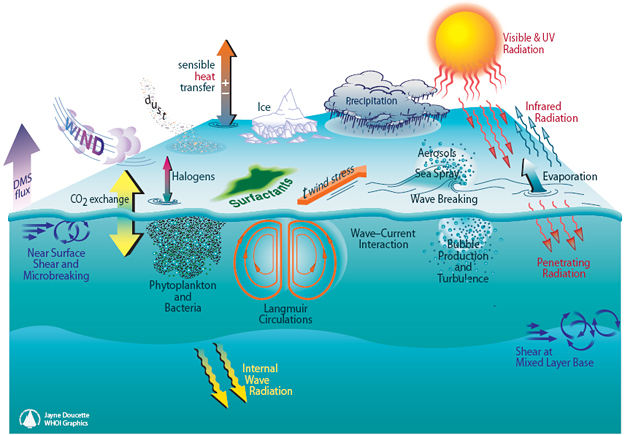This is about the interaction between the ocean and the atmosphere and my master's degree.
When the interview committee asked me about the possible topic of my thesis, I told them that I'm interested in the dynamics of the near surface layer of the ocean, in this case, the Caribbean Sea.
Within this topic, there are 5 subtopics I proposed to explore during my stay at the university:
1. Intensive mixing produced by wind and waves
2. Intensive mixing produced by heat transfer (convection)
3. Mild mixing due to wind-driven helix circulation (Langmuir Circulation)
4. Mixing due to intensive solar radiation absorption in calm weather
5. Changes in heat content, salinity and density due to freshening induced by rain over the ocean.
These 5 items correspond to the Fedorov-Ginzburg Classification of Mixing Processes, which has been used worldwide since 1988. Hopefully in the future, I will propose to the scientific community the study of a mixing process not considered before, who knows. But the latter is a theoretical approach more suitable for a Doctoral Dissertation rather than for a master's thesis. For now, I must focus on learning what has been done and how it has been done.
Current scholarly readings:
Right now I'm doing some review of the literature related to the topic I proposed, namely more on Fedorov and Ginzburg, and what other people have done after them. I'm skimming the following books:
· The near-surface layer of the ocean By Konstantin Nikolaevich Fedorov, A. I. Ginzburg
· The near-surface layer of the ocean: structure, dynamics and applications by Alexander Soloviev, Roger Lukas
· An introduction to Ocean Turbulence by S. A. Thorpe.
· Environmental Fluid Mechanics by Hillel Rubin, Joseph F. Atkinson.
